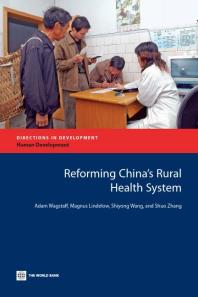(Ebook) Reforming China's Rural Health System by Adam Wagstaff; Shiyong Wang; Magnus Lindelow; Shuo Zhang ISBN 9780821379837, 0821379836
Since 1978 when it embarked on sweeping agricultural and industrial reforms, Chinas economic growth has been remarkable. Its success in transforming itself within just three decades from a very poor low-income country to a successful middle-income country is unparalleled. During this period, however, and in contrast to the first 30 years of the Peoples Republic, progress in the health sector has been disappointing. For example, during the period 1980-2007, China increased its income per head as a percentage of the OECD average from 3 percent to 15 per cent, but infant mortality fell no faster in China than in the OECD area. Government spending on health grew in real terms, but in contrast to the pattern seen in other countries, the share of GDP allocated to government health spending stayed unchanged in China despite 30 years of economic growth of over 8 per cent per year. Household out-of-pocket spending increased to fill the gap, rising as a share of total health spending from 20 per cent in 1978 to over 60 per cent in 2000. This left many households doing without care when they needed it, and others incurring expenses so large they were driven into poverty. In 2003, as part of its program of balanced development and harmonious society, the government began launching a series of policy reforms in the rural health sector where spending and policy reform had lagged. This book examines the performance and workings of the rural health system leading up to these reforms, outlines the reforms, and presents some early evidence on their impacts. It goes on to outline ideas for building on these reforms to further strengthen Chinas rural health system, covering health financing and health insurance, service delivery, and public health. Health systems often get locked into certain reform paths. The final part of the book therefore uses the experiences of the OECD countries to gaze into Chinas future; it asks not only what Chinas health system might look like, but also how China might get there from where it is today.
*Free conversion of into popular formats such as PDF, DOCX, DOC, AZW, EPUB, and MOBI after payment.


